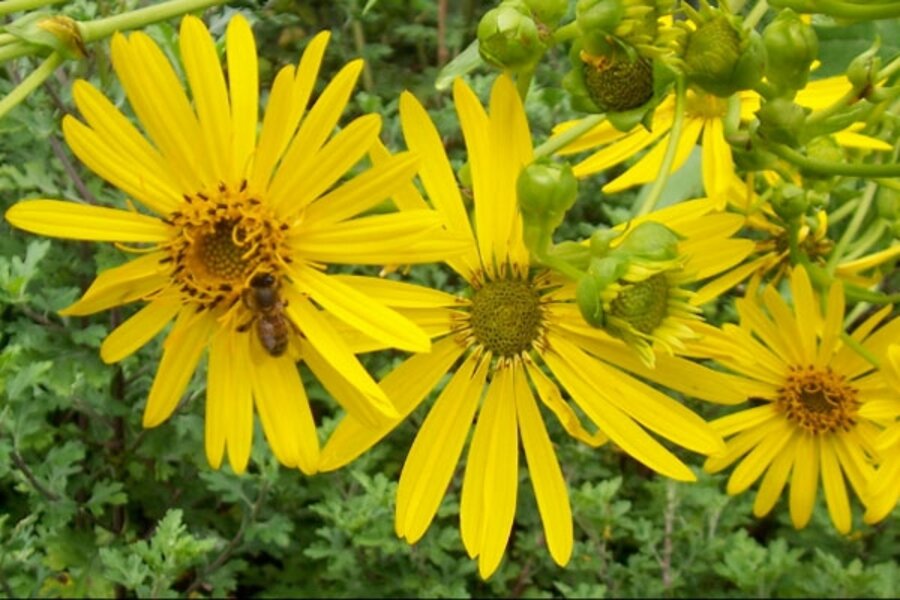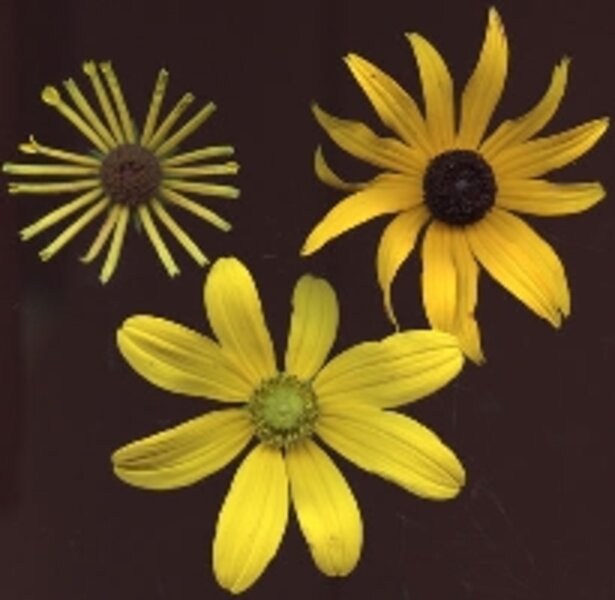Flowers that stand up to August's heat
Loading...
We’ve had so few hot days this summer that I won’t complain. But as I look out the window from my air-conditioned space, I am happy to see how well the plants are taking these temperatures. Of course, I watered early, before the day broke 83 degrees F. (28 degrees C).
I can see a late-blooming 4- to 5- foot-tall daylily outside. All gardeners have quirks. Among mine are a delight in plants that bloom out of season or are taller or in a different color than usual. One of my many phases included collecting taller than normal daylilies that bloomed later into fall – my favorite season. (And, of course, there are night-blooming daylilies, but that’s something to write about on another day.)
I am particularly fond of tall, muscular plants, such as the 5- to 6-foot Rudbeckia lacinata ‘Herbstonne’. Equally tall is R. maxima with fabulous blue leaves and a huge seed head.
The new one I just bought -- for too much money -- R. subtomentosa ‘Henry Eilers’ has narrow, rolled petals, anise-scented leaves and is about 6 feet in height. (See photo at right for the trio of Rudbeckias.)
Pink plume poppy is another favorite. It has pale coral flowers dangling off a candelabra-type structure and the most interesting leaves. In a nice breeze, the leaves flutter like butterflies and the white underside of the leaf is striking to see. (See Photo 2 above.) Truly a thug, this 8-to-12-foot-tall wonder belongs where it can be allowed to run or very strictly contained.
Then there are the several different silphium plants. I fell in love with these members of the aster family a year ago after reading "Prairyerth" by William Least Heat Moon. He described the value this plant had to the native peoples so beautifully that I was hooked.
Among other attributes, it was believed that silphium both prevented and treated lightning strikes. (To date, I have not been struck.) So I started collecting them.
The 8- to 15-foot plants have taken over much of my garden with their delicious (to birds, mice, and voles) seeds. I can't rip them out entirely because of the fall festival of goldfinches, chickadees, and others who take such delight.
They're also called cup plants, because water collects along the square stem at leave junctures. Bees busily collect pollen and once in a great while, in the early morning, I will find one of the big, fat native bees sleeping in a silphium flower. (See Photo 1 above.)
If you have the room, their many wild "customers" make silphium a lively addition to your garden.
Well, I spoke too soon about my garden not being affected by the heat. I went out to get some plants to show you and the chard is lying over and the gooseneck loosestrife is wilting. Yes, I know that gooseneck loosestrife, a native plant, can be invasive. But because I live on the side of a mountain in the Shenandoah Valley, it can’t get too far – too dry for a good invasion.
But I have another worry: It’s August – how long can the gooseneck loosestrife last?
Donna Williamson is a new blogger at Diggin' It. She's a master gardener, garden designer, and garden coach. She has taught gardening and design classes at the State Arboretum of Virginia, Oatlands in Leesburg, and Shenandoah University. She's also the founder and editor of Grandiflora Mid-Atlantic Gardening magazine, and the author of "The Virginia Gardener's Companion: An Insider's Guide to Low Maintenance Gardening in Virginia." She lives in the Shenandoah Valley of Virginia.
Editor’s note: For more Monitor gardening, see our main gardening page. Our blog archive. Our RSS feed.
You may also want to visit Gardening With the Monitor on Flickr. If you join the group (it’s free), you can upload your garden photos. Join the discussions and get answers to your gardening questions.






